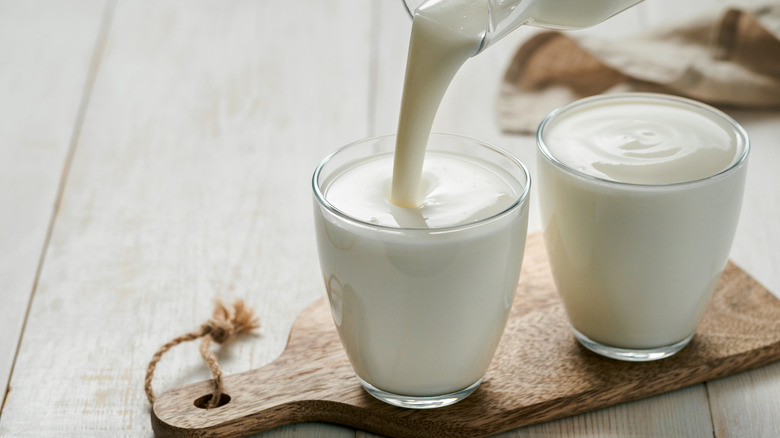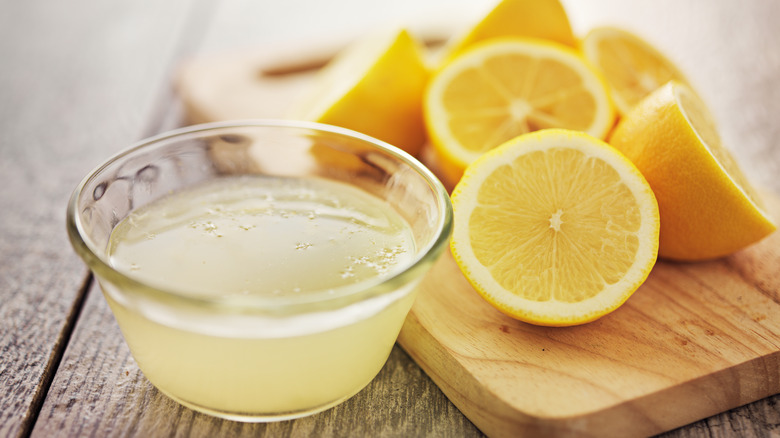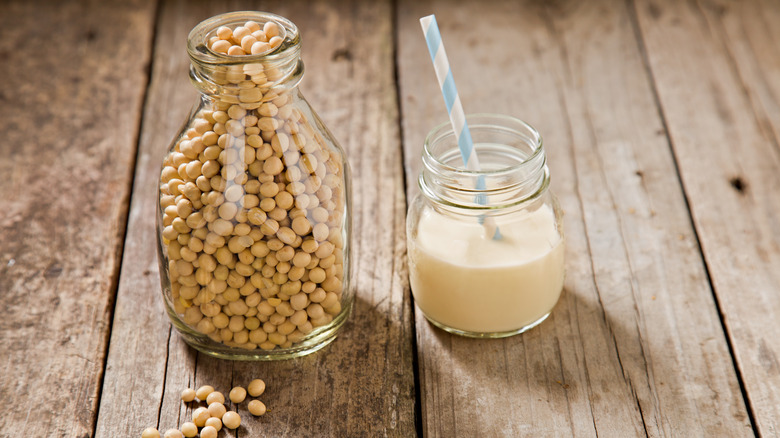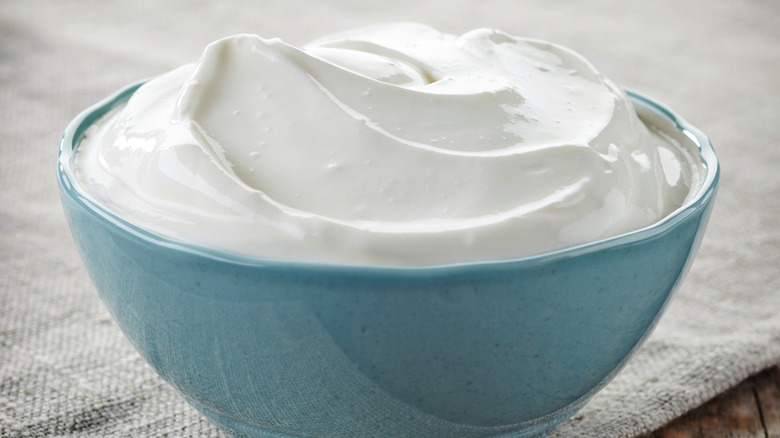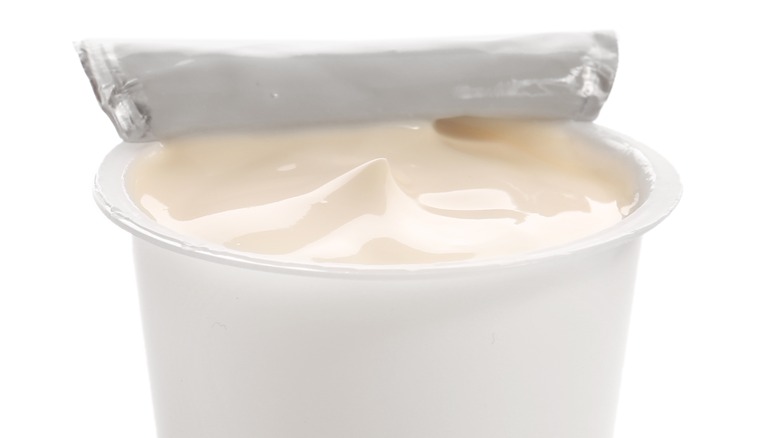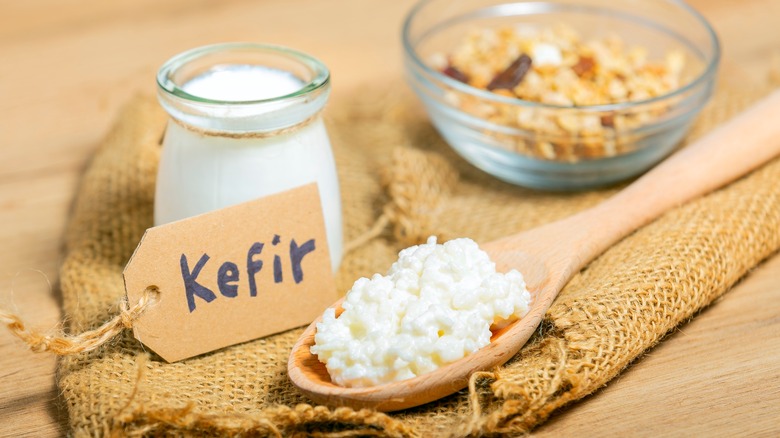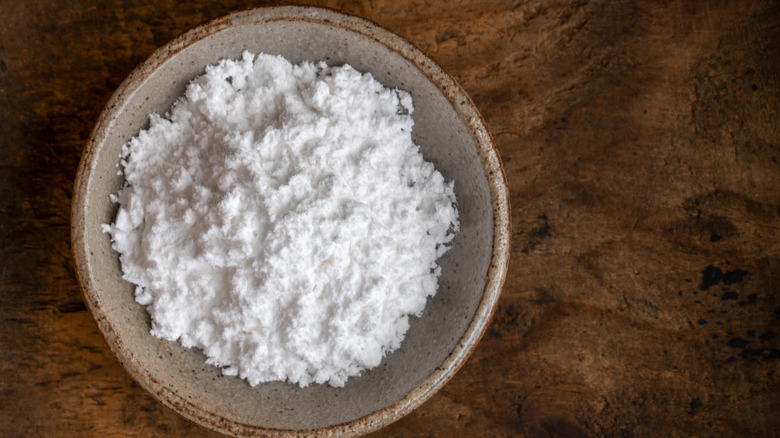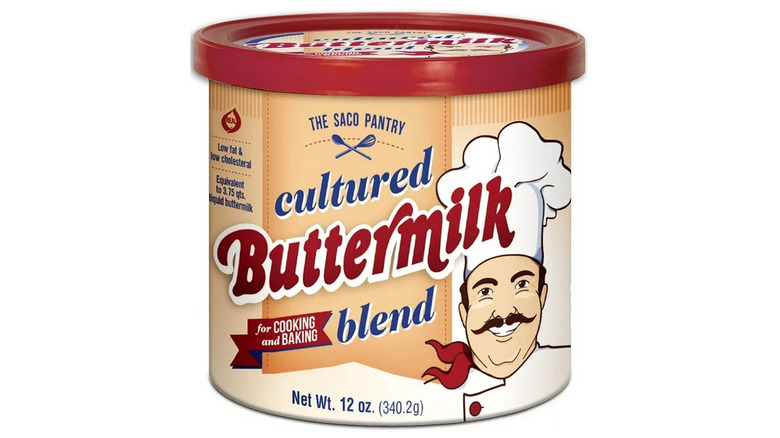7 Substitutes When You Don't Have Buttermilk
How many times have you read a recipe for pancakes or fried chicken that called for buttermilk and panicked? If you are like many people, buttermilk is not something you always have on hand. But that's okay! Fortunately there are plenty of substitutes to choose from.
Buttermilk is milk that has been fermented. It contains water, milk proteins, lactose, a bit of fat, and various acids. Its acidity gives it (and the foods you use it in) a bit of a tangy taste, but more importantly, it reacts with baking soda to make things like biscuits rise. It can also tenderize meat and can make baked goods softer and more delicate.
If you are looking to substitute buttermilk, you need to find a mix of substances that cause the same reactions in the food as the real thing. That's where we come in. All of the substitutions on this list have been tested and used by cooks and bakers for centuries — but there is just one thing to keep in mind. No matter which substitution you choose, it should only be used in a recipe that calls for a small amount of buttermilk. If your recipe specifically requires buttermilk for flavor, you should use that instead, as all of these combinations have a slightly different taste.
1. Milk and an acid
When it comes to substituting buttermilk, the first thing most cooks reach for is the milk carton. Despite the name, buttermilk is not butter-flavored, but it is milk. All you need to do is ferment it, which you can do by simply adding an acid.
Sometimes referred to as "clabbered milk," milk plus an acid creates a thicker, tangier liquid. Although sour milk is usually a bad thing, in this case it is exactly what you need. To make the milk get sour much more rapidly than it would naturally, just add 1 tablespoon of either white vinegar or lemon juice to 1 cup of milk. Let it sit for around five minutes until the milk has grown thick, but not completely curdled. Both of these acidic additions provide the tang and chemical reaction that buttermilk is known for; the latter may add a slight lemon flavor to your baked goods, so you might not want to choose that option for a chocolate dish, for instance.
2. Unsweetened soy milk and an acid
If you follow a vegan diet, you may be feeling discouraged. Buttermilk is not vegan-friendly, and many substitutions for it aren't either. So what's a non-dairy-drinker to do? That's easy: Use non-dairy milk.
Soy milk in particular makes a great substitute for regular milk and creates a nice, thick buttermilk replacement. All you have to do is add lemon juice or vinegar to it, just like you would the true dairy version. If you don't have soy milk, almond milk will work in a pinch, but it won't be as thick and silky. Coconut milk, on the other hand, should be avoided, as it doesn't curdle well and won't become thicker when the acid is added to it, so it won't help your recipe very much.
Once you make the soy milk into vegan buttermilk, you can store any that remains in the refrigerator for up to one week. It is usually best, however, to make the amount you need in the moment you need it so there aren't any leftovers.
3. Sour cream and water
Now we are starting to stray away from the obvious. Just as a buttermilk substitute doesn't need to contain butter, it also doesn't need to contain milk. In this case, you can use another cultured dairy product like sour cream.
Sour cream is created by adding lactic acid cultures to pasteurized cream. These living cultures work to make it thicker and more sour, much like when you add an acid like vinegar to regular milk.
For our purposes, we don't need to make sour cream, we just need to turn it into something we can use in our recipe to fill the hole left by buttermilk. Since the two are created in a similar way, sour cream is already very close to what we are looking for, aside from the fact that it is too thick. To use it in place of buttermilk, you need to thin it out. Unlike the milk + acid formula, in which a small amount of acid is added to a large amount of milk, this is a one-to-one ratio. So, if you are making 1 cup of buttermilk substitute, you should use ½ cup of sour cream plus a ½ cup of water. Since sour cream is also pretty tangy, this is also a good choice for recipes in which you expect a bigger hint of buttermilk's sour flavor.
4. Yogurt and water
Another cultured dairy substitute for buttermilk is yogurt. Yogurt, like buttermilk, has been fermented, in this case by adding "good bacteria," a.k.a. probiotics, to milk. Unlike sour cream, yogurt is less stable, which means it isn't as thick and homogeneous. It also has an even tangier taste, which is another reason it can be a workable buttermilk substitute.
While some recipes state that you can substitute yogurt for buttermilk in a simple one-to-one ratio, this is not true of all yogurts. Most yogurt is thicker than buttermilk, so if you are using plain yogurt (always choose the unsweetened kind for this), you will need to add ¼ cup of liquid like skim milk, 1% milk, or water to 1 ¾ cups to make it the right consistency. If you are using a thicker yogurt like Greek yogurt, you will need to add 1⅓ cups of skim or 1% milk to ⅔ cup yogurt to get the right consistency.
5. Kefir
First things first: What is kefir? Many people think it is a type of yogurt, but this is not exactly true. Kefir is a type of fermented milk and its name comes from the Turkish "keyif," which translates to "good feeling," as in, the one you get after you drink these probiotics and grains. Like yogurt, kefir has active cultures and is created from milk. Kefir, however, is a more liquid, drinkable product, and often tastes tart and tangy. It also may taste as if it has been carbonated due to the gases produced by the good bacteria and yeast cultures that break down the sugars inside it.
Kefir can be made from almost any kind of milk, including cow, sheep, goat, and non-dairy milk. It can also come in a wide assortment of flavors with various levels of sweetness. But if you are going to use it as a substitute for buttermilk, you will need to get the unflavored, unsweetened kind. Kefir may be one of the simplest swaps for buttermilk, as you can simply use an equal amount of the former as you would the latter
6. Milk and cream of tartar
Have you ever wondered about the difference between baking soda and baking powder? If so, you may have done a Google search and discovered that baking powder is baking soda plus cream of tartar. Cream of tartar is another white powder commonly used in baked goods like meringues, but it is different from baking soda because it is acidic. In fact, it is made from tartic acid, a natural byproduct that forms on the interior of barrels of wine during the wine making process.
Since it is not a liquid like vinegar and lemon juice, it is a bit more concentrated. For this reason, you only need to add 1 ¾ teaspoon (not tablespoons this time) to 1 cup of milk. Stir it well, then let it sit for around five minutes, and you should see the same reaction. The flavor profile should be fairly similar as well. Cream of tartar tastes both acidic and tangy, with undertones of citrus not unlike lemon or vinegar.
7. Buttermilk powder and water
Wait a second... are we telling you that there is a powdered version of buttermilk available? Yes, yes we are. Buttermilk powder is dehydrated buttermilk that is made to be shelf-stable and last a long time. All you have to do to turn it into usable buttermilk is stir 1 tablespoon of the powder into 1 cup of water. Easy, right?
Powdered buttermilk is a terrific option for those who don't use buttermilk often enough to justify buying a whole carton of it at the store. Unlike some other dehydrated things, however, powdered buttermilk must be kept in the refrigerator instead of the pantry. Still, though, it lasts a very long time in there, so the only slight drawback here is that it will take up a little bit of space in the fridge.
Otherwise, it is all pros. Since you can just use the exact amount you need to make at the time, you won't end up tossing out extra buttermilk, which is often the case when you buy a full container of it. It also tastes exactly like the real thing in recipes because technically it is the real thing.
